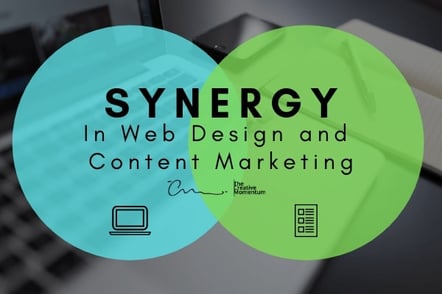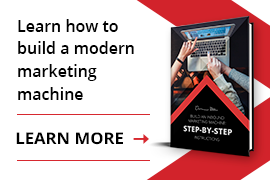
Content marketing and web design go hand-in-hand.
We'd say you can't have one without the other, but that just isn't true. Plenty of companies build websites without giving a thought to how their content will fit into the equation. In our view, this is a huge missed opportunity.
After all, content is the workhorse of your online presence, and it’s not something you can kick-start overnight. For the best content marketing ROI, you need to integrate it with your website design from the very beginning.
A Primer on Content Marketing
To underscore the importance of these ideas, here’s a quick refresher on content marketing.
Content marketing is fast becoming one of the best ways for companies to market themselves online. As part of a larger digital marketing strategy, content marketing involves publishing material (blogs, articles, social media posts, videos, etc.) to engage website visitors.
The idea is that regular, consistent messaging helps companies engage with their audience, demonstrates their thought leadership, and encourage prospects to buy from the company. It’s a powerful complement to digital marketing that can yield serious results: Annual growth in unique site traffic is 7.8 times higher for content marketing leaders compared to followers.
Of course, this is the best case scenario. Your blogs don’t live in a vacuum, and if you want them to pull their weight, you’ll need to make sure they’re supported by your other site elements.
Content-Friendly Web Design
Content-friendly web design is all about accessibility and simplicity. The goal is to make the design subtle enough to do its job without distracting from the message of the content itself.
Start with spacing
First and foremost, craft your layouts to keep your content visually appealing. Take a look at one of your blogs. How much white space is available in the margins? Does the text have room to breathe? And what about the fonts you’re using?
These are small issues, but remember, the goal of content-friendly web design is about the UX. Make it easier for readers to understand the material, and space everything out appropriately on the page to keep things balanced.
Build a dedicated content library
And while you’re at it, make sure your website wireframe has space for a dedicated content library. This is basic navigation; if users like what you’re posting, you want to make it easy for them to find more. (And if you’re in a larger company, you’ll need an easy way for your sales reps to send collateral to prospects.) Put some time into this and set up proper tags, categories, and search functions.
Social sharing
Naturally, your web design should include elements that encourage social sharing. Most web layouts these days have social sharing buttons integrated into the margins to prompt users to pass content along. This is an easy web design fix that takes only seconds to update. Check into which channels your market typically uses and make sure those are represented on each piece of content.
Calls-to-action
Along those same lines, be conscious of where you’re placing your CTAs. CTA location is a huge topic in web design, and there are lots of approaches to make them work. One strategy is to keep your CTA visible at all times by placing it in a fixed location in your navigation—either in the vertical or horizontal menu bars on your page. This keeps it front-and-center for your readers, no matter where they are on the page.
This step is crucial, as your CTA is the gateway to your sales funnel. And while the point of any individual piece of content isn’t necessarily converting readers at that moment, there will come a point where they want to see more. When that happens, a visible CTA or email capture form is a great way to bring them in.
Use images
Images are another great way to support your content through web design. Look for opportunities to include a few visuals throughout your content. Stock images are okay, but images relevant to the text are best: Research shows that when content is paired with a relevant image, users remember 50 percent more of the material than when viewing text alone.
This tip is crucial for content that’s packed full of data and research. If your content looks too weighty and scientific, consider pulling some of the data and incorporating it into an infographic. Infographics help bring a visual component to dry statistics and can drastically improve the readability of your piece. By some estimates, infographics are 30 times more likely to get read than a plain text article.
Support landing pages
Here’s one more quick tip on how to synergize your content and web design: Landing page optimization. In particular, we recommend incorporating brief explainer videos on each of your specific product landing pages. This simple change can be the push that encourages viewers to follow-through and enter their data in your form fields. In one study, a landing page with video outperformed a static landing page in conversions by 32 percent.
Joining Web Design with Content
It’s certainly possible to add on a content marketing component to your site design after it’s live—but it’s far from ideal. The smoothest integrations between content and website come when content assets are accounted for early in the planning process. Work with your designers and map out each of these elements before you begin.

